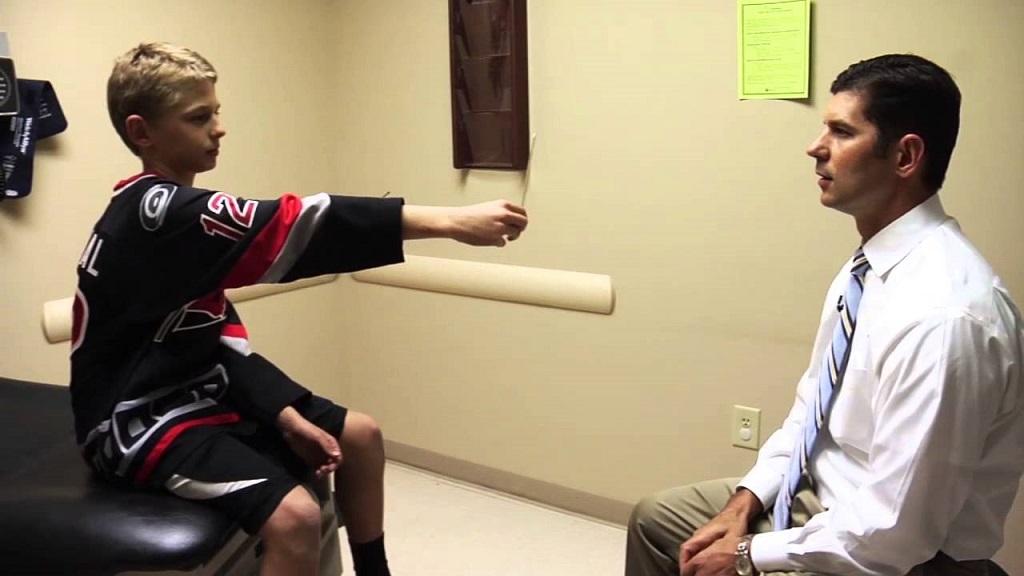
VOMS CONCUSSION ASSESSMENT
VOMS (Vestibular/Ocular Motor Screening) is a concussion assessment is a method of testing the functioning of the brain, especially after a head injury.
A concussion is a traumatic brain injury affecting the brain function usually after a big blow to the head. Concussions cause effects such as loss of memory, concentration, coordination and balance.
Concussion assessment is essential to evaluate the functioning of the brain after head trauma to show the current working of the mind. It assesses the ability of the brain to process and think after an injury and diagnose the extent of the damage. A team may also conduct a baseline concussion test before the start of a sports season to athletes with a higher risk of getting head injuries.
How does VOMS Concussion Assessment Work?
VOMS assessment is a basic test to allow doctors and therapists to diagnose and treat concussions in a better way. It is a simple method using a smart app, a metronome, a tape measure and a tongue depressor.
VOMS assessment tests both the vision and vestibular system. An examiner using VOMS tests the ability of an athlete to follow a moving target visually, view an object getting closer and switch between gazing at two different items. A doctor or an athletic trainer uses the results of VOMS concussion assessment to determine if the tests cause symptoms.
Administering VOMS takes just 5-10 minutes and identifies problems that other tests fail to pick with more accuracy.
Are you searching for VOMS concussion assessment essay? Find expert help from Nursing writing specialist. Try yours today risk free.
Areas of VOMS Concussion Assessment Screening Test
VOMS tests these five areas of ocular and vestibular systems in series of simple exercises.
Smooth pursuits- Tests an ability to slowly follow a moving target visually when the examiner and patient are sitting. An examiner holds a fingertip 3 feet away from the patient who should maintain focus on a target that the examiner moves horizontally and vertically for 1.5 ft at a rate that takes 2 seconds.
Saccades - Tests the ability of the patient's eyes to scurry between two targets when he and the examiner are sitting. The examiner performs horizontal and vertical saccades by moving an object 1.5 ft both sides while holding it three feet from the patient. The examiner asks the patient to move the eye as fast as possible from one point to another.
Convergence - Measures ability to view a near target without t any double vision and if necessary, the patient will wear corrective lenses. An examiner watches the eye movement of the patient while focusing on a small object of around 14 point font size at an arm's length before slowly pulling it towards the nose the patient should stop moving the target after seeing two distinct images or if the examiner notices an outward deviation of an eye. The examiner measures the distance between the target and the patient’s tip of the nose in centimeters and repeats the test twice.
Visual Motion Sensitivity (VMS) Test - Tests sensitivity to visual motion and the ability to inhibit the vestibular-induced eye movement is the vision. The patient faces a busy area, outstretches the arm and focuses attention on the thumb. The next action is to move the head, eyes and trunk as a unit at amplitude of 800 to the right and then left. A metronome ensures that the speed of rotation stays at 50 beats a minute for 5 repetitions.
Vestibular-Oscular Reflex (VOR) test - Assesses an ability to stabilize vision during head movement. The examiner holds a target of about 14 point font size in the form of a patient at midline position at a distance of 3 ft. while they are both sitting. The patient moves the head at amplitude of 200 to each side at the speed of 180 beats a minute to complete when the hand moves back to the starting position. The patient performs ten repetitions horizontally and vertically.
A VOMS concussion assessment examiner - records dizziness, nausea, and headache and fogginess ratings after each test on a scale of 1-10 to determine the extent of a concussion.

